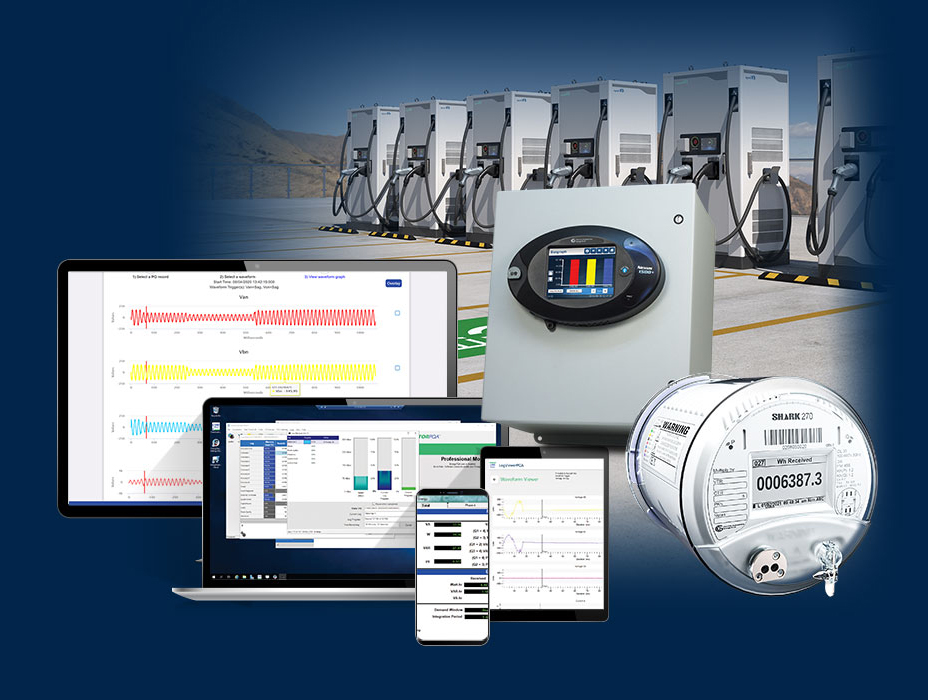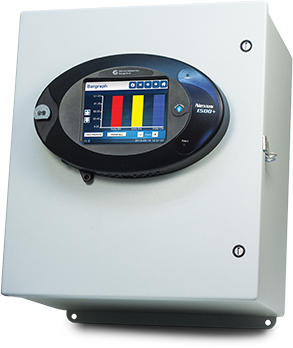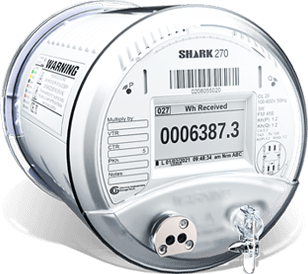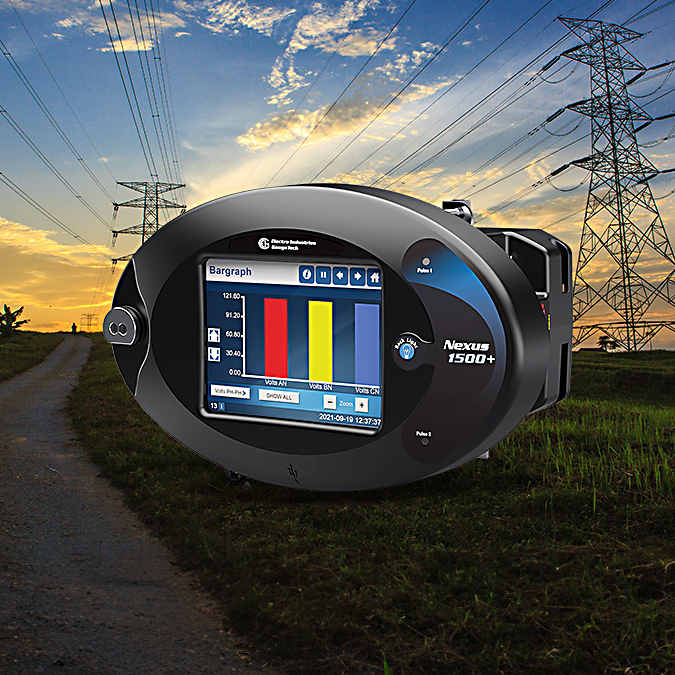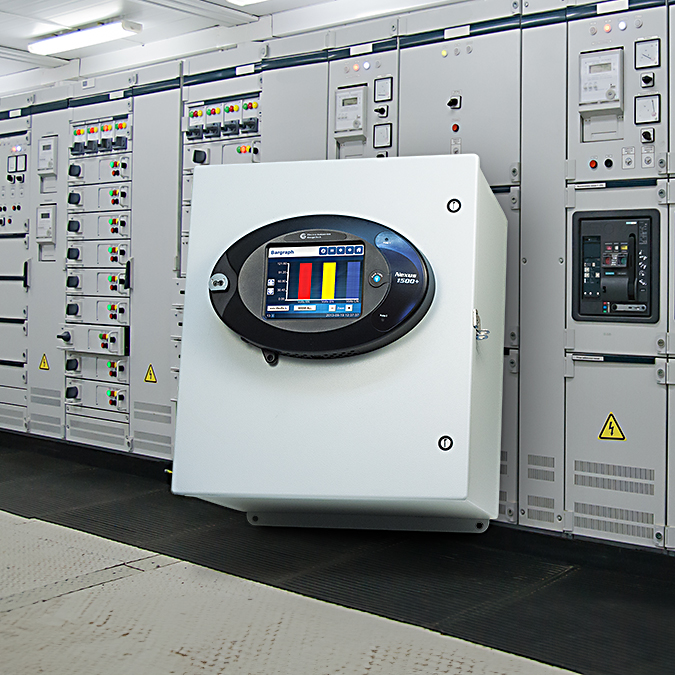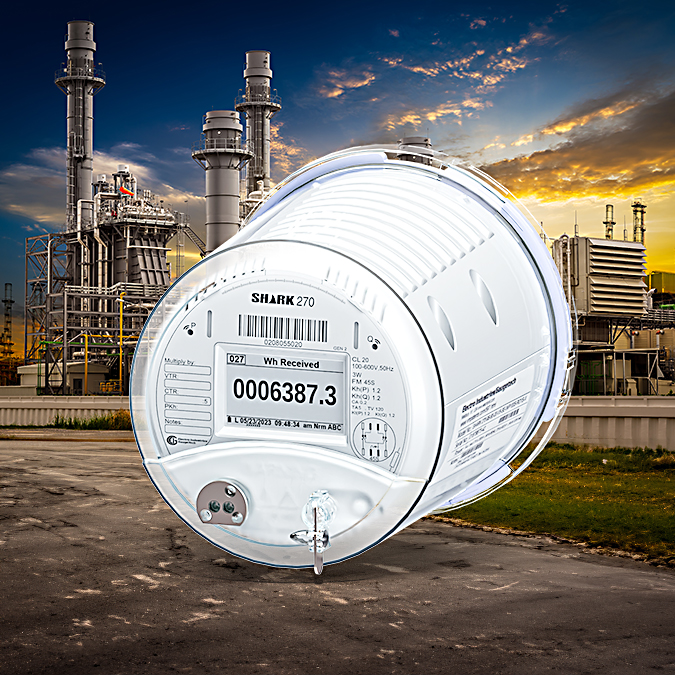Introduction
As electric vehicle (EV) use increases, there is an increased need for EV charging stations. Even though many EV drivers charge their cars at home, for longer trips and commercial vehicles home charging doesn’t meet the need. Public and private DC fast charging (DCFC) stations offer a better solution for commercial EVs and on-the-go charging.
There are three levels of EV charging ports. Level 1 ports support single phase 120 V AC, 12-15 A; have a charging load of 1.4 to 1.9 kW; and charge at a rate of 3.5 miles per hour. They are almost entirely used for home charging. They are too slow to be of practical use by larger private or public charging stations. Level 2 ports support single phase 206-240 V AC, 12-80 A; with a charging load of 2.5 to 19.2 kW and a charging time of 12-60 miles per hour. They are also commonly used at home and in some public or private charging stations, e.g., office building parking lots. Both Level 1 and Level 2 charging ports simply transfer AC voltage supplied by the electric utility to the EV. This voltage is converted in the EV to DC voltage, which is the energy stored in the EV car’s batteries.
DCFC stations, the third level, support 3-phase 208 to 480 V AC, greater than 100 Amps, a 50 to 350 kW charging load, and a charging time of greater than 200 miles per hour. DCFC ports perform the conversion of utility AC voltage to DC voltage before transferring the voltage to the EV. In order to do this, they need a bigger, more costly infrastructure than Level 1 or Level 2 charging stations. The equipment needed for Level 3 DCFC charging consists of overcurrent protection/sectionalizers that are connected to the utility wires, a step-down transformer to take the AC power from the utility feed to a lower value (1000 kVA), a load center for AC to DC conversion, and finally wiring to the DCFC charging ports (1500 kW). Sometimes a solar PV array may be used to supply part of the EV charging voltage. In this case, the solar array would be connected to a DC/DC converter and then to the load center. The array might also be connected to onsite energy storage via a DC/DC and ES charge control, to store excess energy generated by the PV system.
Energy Metering for EV Charging Stations
To determine the amount of energy being transferred to an EV by a charging port, a metering device is used. This may be a utility-installed electric meter that measures a garage Level 1 charging port. Level 2 charging ports often have a metering component built into them. In both Level 1 and Level 2 charging ports, the main function of the meter is to measure the amount of current being transferred to the EV. Level 2 charging stations may also use this information for billing purposes, to calculate the charge for the energy consumed.
As Level 3 DCFC charging stations are more complex, their need for metering is also more complex. In the case of a DCFC charging station, the meter would be placed after the step-down transformer and be used to monitor all of the charging ports in the station. A high accuracy revenue meter with 0.5% energy metering accuracy, or better, is needed. This meter will measure the energy being transferred from the utility and monitor its power quality. If a solar array is used, it can also monitor any energy being transferred back to the utility. Accuracy is of great importance in a high-cost system such as a DCFC station. Being able to verify utility bills and compensation from the utility is necessary to ensure profitability.
Power Quality Metering for DCFC Stations
Conversion of voltage from the utility’s AC to the DCFC station’s DC can introduce power quality problems such as harmonics. Harmonics are currents or voltages with frequencies that are integer multiples of the fundamental power frequency. “High harmonic currents contribute to distribution circuit losses, voltage fluctuations on power distribution networks — and ultimately, faulty EV chargers.”1 A comprehensive study conducted by the Electric Power Engineering Group at Luleá University of Technology in Skellefteá, Sweden, looked at multiple power quality issues associated with EV charging stations: voltage dips from the grid that can reduce the charging station’s efficiency and reduce EV battery life cycles; the potential effect on the grid of multiple charging stations going offline due to undervoltage protection; and fast voltage fluctuations and their effect on flicker; in addition to waveform distortion – harmonics, interharmonics, and supraharmonics due to the charging infrastructure. The study discusses the power quality issues in depth and raises the need for additional information on the effects of EV charging. It also discusses steps to minimize the negative impact on the grid of increasing EV usage.2
Installing an advanced power and energy meter with power quality capabilities gives the DCFC charging station operator the ability to monitor the quality of the power coming from the grid and being transferred to the EV. A meter with programmable alarms can notify the operator of voltage and current sags/surges, low power factor, voltage and current unbalance, and other power quality conditions. This alerts an operator to problems with the charging station or its grid connection, so that timely action can be taken to mitigate the problem. A meter with waveform recording capability allows the charging station operator to analyze power quality events.
1 “Power Quality: the First Mile in EV Charging,” Powerside, accessed 1/23/2024 from https://powerside.com/wp-content/uploads/2024/01/Power-Quality-The-First-Mile-in-EV-Charging.pdf
2 “Impact of Electrical Charging on the Power Grid,” Shimi Sudha Letha and Math Bollen, Luleá University of Technology, accessed 1/23/2024 from www.diva-portal.org/smash/get/diva2:1530550/FULLTEXT02.pdf
Data Analysis for DCFC Stations
In addition to high accuracy monitoring of energy usage and power quality
analysis, a meter with memory for data logging enables:
- Analysis of charging station’s use.
- Information for future development plans.
- Reports to meet governmental requirements.
- Reports to show usage and power quality event origins in event of dispute with utility.
Energy Management Software for DCFC Stations
The power quality revenue accurate meter needs software to manage the metered data and produce required reports, bills, and data for analysis. Either a cloud-based application or a robust energy management software application is needed. A cloud-based application enables charging station operators to access data through any web browser, on any device. A cloud-based energy management system that allows the operator to determine the location of power quality events – whether they are from the utility or from the DCFC charging station, is of great benefit. An energy management application used with meters that support WiFi, cellular communication, or Ethernet can also be used to access metered data and power quality remotely.
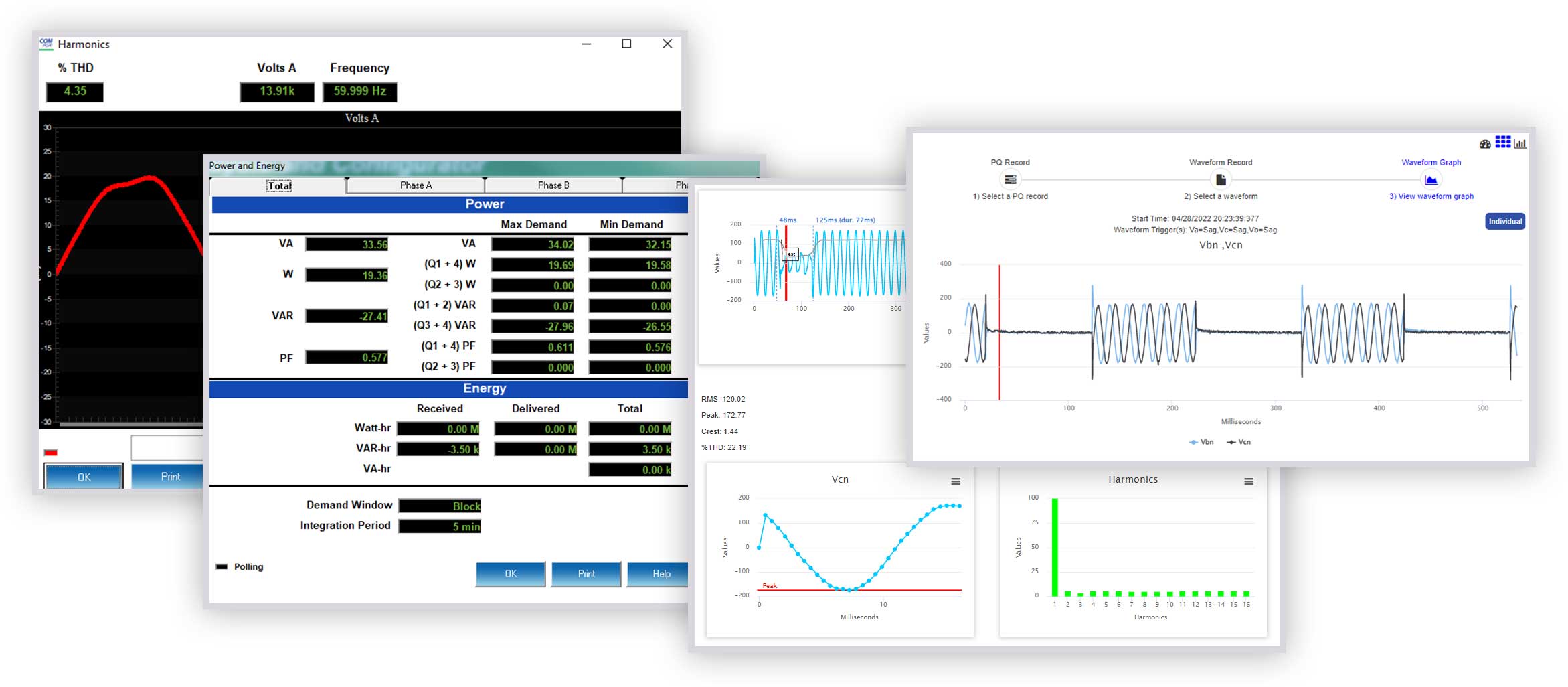
Overview of a DCFC Charging Station
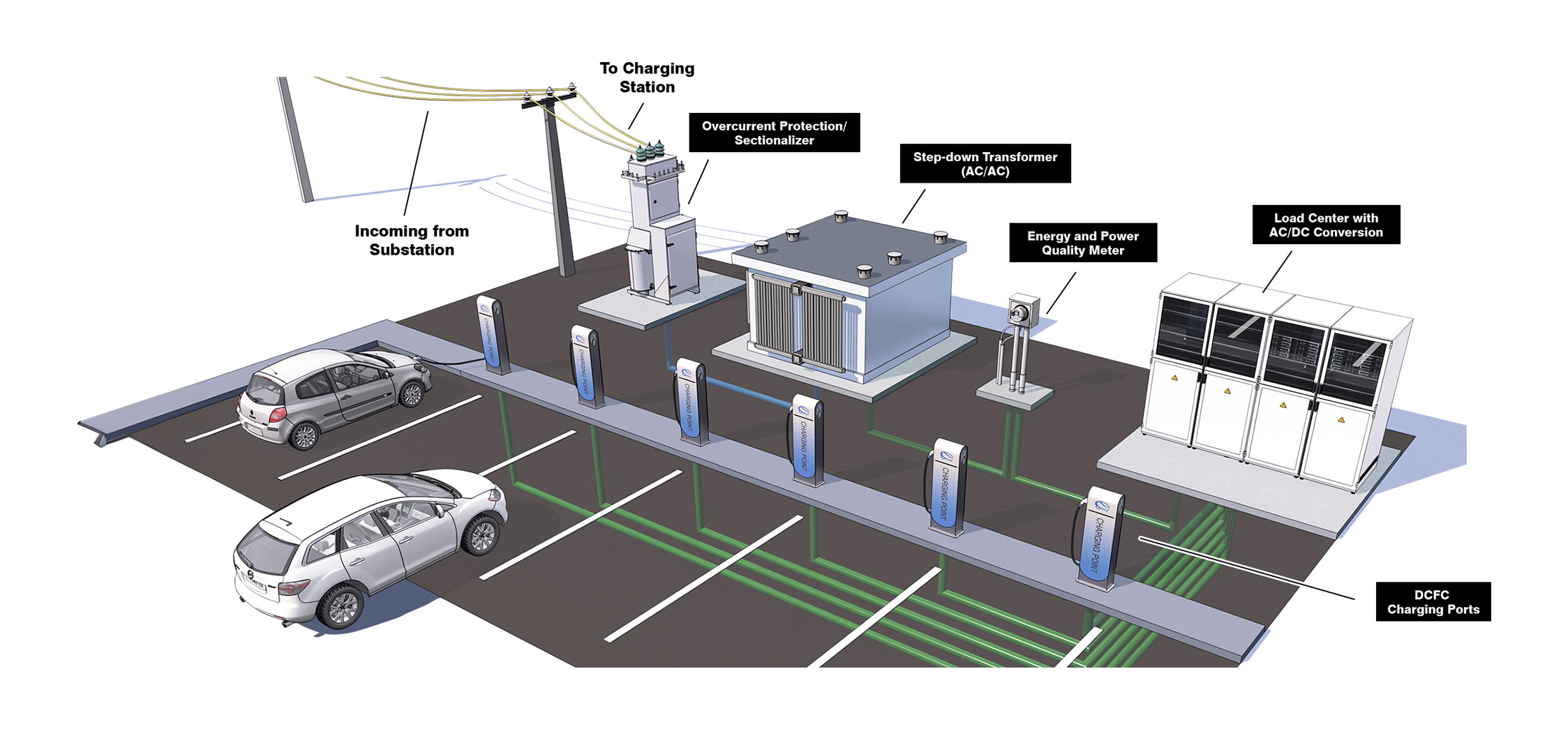
Popular Products used in Energy Metering for EV Charging Stations
Advanced Power Quality Meter and Revenue Meter with Multiple Communication Ports in Enclosure
Advanced Power Quality Meter and Revenue Meter with Multiple Communication Ports in Enclosure
Revenue and Power Quality Meter with Optional Cellular Modem
Revenue and Power Quality Meter with Optional Cellular Modem
Cloud-Based Energy Management Solution
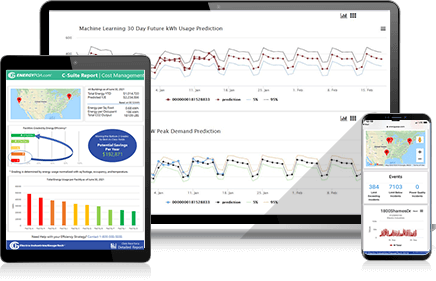
Cloud-Based Energy Management Solution
Energy Management Software
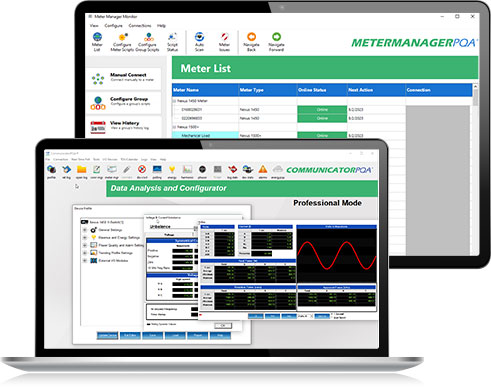
Energy Management Software
Engineering Services

Engineering Services
Related Products Used with Energy Metering for EV Charging Stations
https://www.electroind.com/eigs-energypqa-com-cloud-solution-is-finalist-in-plant-engineerings-2020-product-of-the-year/
https://www.electroind.com/eig-releases-energypqa-com-cloud-based-energy-management-solution/
https://www.electroind.com/facts-you-should-know-about-commercial-energy-waste-in-2019/
https://www.youtube.com/watch?v=XTiIsF1D0Fc
https://www.youtube.com/watch?v=GAVJERWMKeU
2019 Statistics
Nulla a turpis et felis tincidunt luctus ac non nulla. Sed eros dolor, hendrerit et pulvinar ut, tempus id elit.




